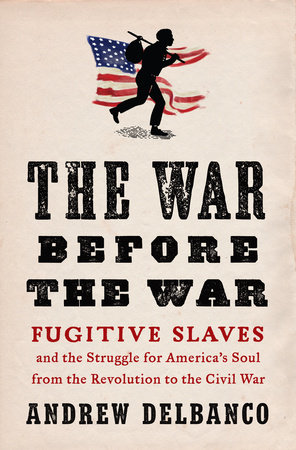Runaway Injustice

Americans pledge allegiance to “one Nation under God … with liberty and justice for all.” But for the first 89 years of its existence, America consisted of two distinct nations: one slave and one free. The halves were cobbled together by the United States Constitution, which, interestingly enough, did not contain the words slave or slavery until it was amended after the Civil War.
Rather than using such stark terms, the founding document’s fugitive slave clause euphemistically proclaimed “No person held to service or labour in one state, under the laws thereof, escaping into another shall … be discharged from such service or labour.” The unnamed “peculiar institution,” it seemed, was an embarrassment to the new nation.
There would be no sanctuary cities and black lives didn’t matter at all. Enslaved in the South, runaways as well as “free blacks” were not particularly welcome in the North, where, for example, Connecticut and Pennsylvania disenfranchised their African-American citizens in 1818 and 1838, respectively. In 1857, the U.S, Supreme Court ruled that members of the “negro African race” could not claim U.S. citizenship.
Laws and fear of death notwithstanding, fugitive slaves who reached freedom would graphically expose the hypocrisy and instability of a house divided, half slave and half free – or quasi-free.
Andrew Delbanco’s latest book, "The War Before the War: Fugitive Slaves and the Struggle for America’s Soul from the Revolution to the Civil War," is a richly detailed, thought-provoking and compelling chronicle of the role fugitive slaves played in widening the gap between America’s two distinct societies.
How well do you know historical fiction? Take our quiz and find out!
If the exodus from bondage of tens of thousands of people was not the cause of the Civil War, it clearly was a major factor in the growing polarization that gripped the nation. Runaway slaves inspired not only outrage among many free-state Americans; their harrowing tales also spawned a literary genre epitomized by the publication in 1852 of Harriet Beecher Stowe’s novel, “Uncle Tom’s Cabin.”
Southerners like U.S. Senator John C. Calhoun had been insisting in the face of abolitionist proselytizing that slavery wasn’t peculiar or oppressive at all but rather beneficial for blacks as well as for whites. Abraham Lincoln punctured this fanciful sophistry by pointing out that not only were people fleeing slavery – more tellingly, no one was volunteering to partake of its purported benefits.
Fugitive slaves, the author argues, were never a direct threat to the continued existence of the peculiar institution: some 1,000 fled their masters in 1850 out of some 3 million overall still held in bondage. But these brave souls brought Northerners face to face with the brutal reality of slavery.
In response, free states passed “personal liberty” laws that made it more difficult for slave chasers to catch and re-enslave runaways. Some citizens took extrajudicial liberties: mobs stormed jails to free detained runaways. Others hid them from the authorities and hastened them along the Underground Railway to Canada. Southern pols and plantation owners were not pleased.
If a growing irritant to their masters in the best of times, the restless enslaved populace became a national security risk during wartime. The British offered slaves their freedom if they fought against their oppressors in both the Revolutionary War and the War of 1812. Thomas Jefferson estimated (probably overestimated) that some 70,000 heeded the call from 1776 to 1783. In both peace treaties, Americans stipulated that the British should return these individuals to their owners.
But it took the Civil War itself to turn fugitives into an organized fighting force that forcefully advanced the cause of emancipation. Delbanco makes it clear that while the South knew from the start that the fight was about slavery, the North began the war simply seeking to preserve the Union, with slavery intact. But time, military necessity, and droves of freedom-seeking African Americans would change the Union’s perception of what it was fighting for.
Early on, in May 1861, Union Maj. Gen. Benjamin Butler ad-libbed the concept of “human contraband"; it allowed him to retain and make use of the fleeing slaves who were reporting for duty to his command at Fort Monroe, Va. By July, some 900, including women and children, had done so. It was the beginning of “military emancipation.”
By the war’s end, about 170,000 African Americans, making up one-tenth of Union forces, had served their country. Toward the bitter end, the Confederacy toyed with the idea of offering freedom to individual slaves who would take up arms to defend slavery. This was oxymoronic on so many levels, and the notion quickly died.
Andrew Delbanco, who is a Columbia University professor, has written an engaging and most valuable account of America’s original sin. He notes that Thomas Jefferson, the man who famously wrote “all men are created equal,” also penned – seven years previously – an advertisement seeking the return of one of his slaves who had run away.
Jefferson also wrote this about the peculiar institution: “I tremble for my country when I reflect that God is just, that his justice does not sleep forever.”